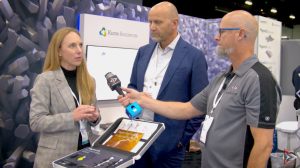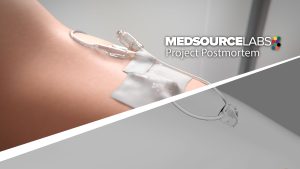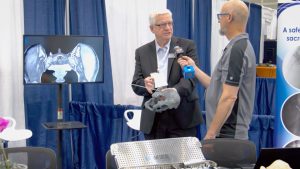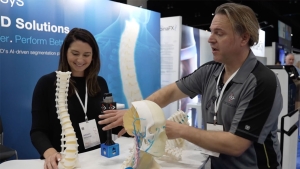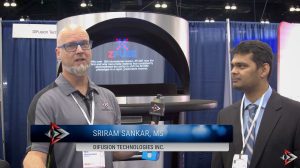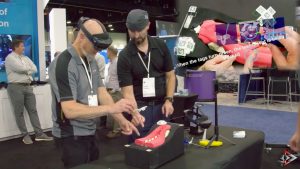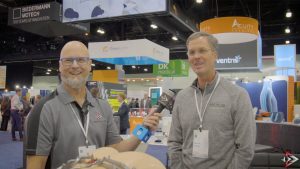In the ever-evolving landscape of medical technology and innovation, the North American Spine Society (NASS) 2023 conference in Los Angeles, California, proved to be a pivotal event. Among the standout exhibitors and presenters, NEXT® Orthosurgical caught the attention of both spine surgeons and the media. “Doctech.live,” a Med-Tech Innovation Report and journalist company sponsored by Ghost Productions Inc., was fortunate to sit down with Jeff Solimine, the R&D Manager at Next Orthosurgical, to delve into the groundbreaking technology behind the NEXT® Orthosurgical Interfuse System.

About NEXT Orthosurgical and the Interfuse System
Located in Vista California, Next Orthosurgical is a medical device company on a mission to enhance the experience for both patients and surgeons by pioneering next-generation spinal solutions. Their dedication to precision, patient-centered design, and clinical excellence sets them apart in the industry.
The highlight of their NASS 2023 showcase was the NEXT® Orthosurgical Interfuse System, a modular interbody system that redefines spinal surgery. This system allows surgeons to implant a substantial device through a minimally invasive posterior approach, thereby reducing trauma and accelerating healing. What truly sets the Interfuse System apart is its proprietary intraoperative assembly technology, which can be customized to match the anatomical shape of each patient’s disc space. This unique feature promotes fusion and greater stability, making it a game-changer in the field of spine surgery.
Maximizing Endplate Contact and Optimizing Fusion
During the interview, Jeff Solimine explained the significance of the Interfuse System’s design. He highlighted that posterior interbodies, which are traditionally used in spinal surgery, tend to be fairly narrow. Surgeons usually insert two of these narrow interbodies from behind the spine. However, due to their smaller size, there is a higher risk of subsidence, where the implanted device can sink into the bone, leading to a loss of disc height.
The Interfuse System, on the other hand, provides a solution to this problem. It is expandable laterally to create an ALIF-sized footprint while being implanted through a minimally invasive posterior approach. This means that patients can benefit from a larger interbody that reduces the chances of subsidence, improving the overall outcome of the surgery.
The Advantages of Posterior Implantation
One of the key advantages of the Interfuse System is the ability to perform the entire procedure posteriorly. Solimine emphasized that this approach not only saves time but also minimizes blood loss and reduces the risk associated with flipping the patient during surgery. The ability to insert larger interbodies through posterior access points is a game-changer for both surgeons and patients.
Patient-Centric Approach and Training
Solimine acknowledged that while the Interfuse System offers significant benefits for patients, it requires surgeons to adapt to a slightly different surgical procedure. Building a larger interbody within the disc space itself takes a bit more time than inserting two standard interbodies. However, the benefits for the patient, including reduced subsidence, make it a worthwhile investment.
To address the learning curve for surgeons, Next Orthosurgical employs a comprehensive training program. Surgeons may have the opportunity to train in-house or participate in demonstrations provided by the company. The goal is to ensure that surgeons are well-prepared to perform these procedures effectively.
Training Tools: Cadavers and Sawbones
When asked about the training process, Solimine explained that they use a combination of cadavers and sawbones. Cadavers offer surgeons an experience that is as close as possible to operating on a live patient. This hands-on experience is invaluable for gaining confidence and competence with the Interfuse System. Additionally, they also use sawbones, which are anatomical models made of bone-like material, to further hone their skills. This combination of training tools caters to surgeons of varying experience levels, ensuring that they are well-prepared to use the Interfuse System effectively.
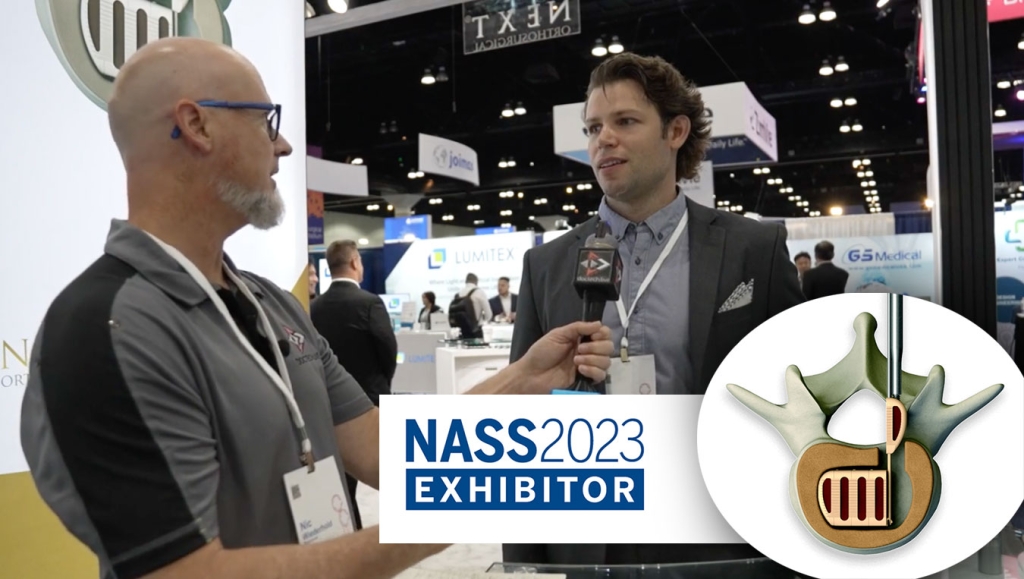
Conclusion
The NEXT® Orthosurgical Interfuse System represents a significant advancement in the field of spine surgery. By offering a posterior approach with larger interbodies, it addresses the issue of subsidence and improves patient outcomes. The commitment of Next Orthosurgical to provide comprehensive training for surgeons ensures that this groundbreaking technology can be harnessed to its full potential. As we look toward the future of spine surgery, innovations like the Interfuse System promise to revolutionize the field and enhance the lives of patients and surgeons alike. NASS 2023 provided a glimpse into this exciting future, and it’s clear that Next Orthosurgical is leading the way.




